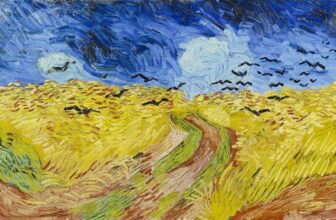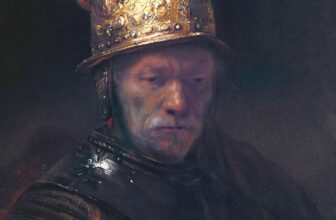The Abduction of Europa
A Journey Through Myth, Art, and Symbolism
In the rich tapestry of Greek mythology, few stories have captured the imagination of poets, painters, and philosophers like the abduction of Europa. A tale woven from passion, deception, and divine intervention, the myth of Europa’s abduction has transcended time and culture, leaving its mark not only in literature and art but also in the very name of a continent. But what is really happening in the abduction of Europa? Who was she, and why did the king of gods descend from Olympus to pursue her? Let’s delve deep into this captivating myth, exploring its origins, its symbolic meanings, and the masterpieces it inspired.
Who Was Europa?
Europa was a Phoenician princess, the daughter of King Agenor (or in some versions, King Phoenix) and Telephassa. Her beauty was said to rival that of the goddesses themselves, radiant, graceful, and serene. She lived in the ancient city of Tyre, on the eastern shores of the Mediterranean (modern-day Lebanon), a region known for its vibrant culture and mythological significance.
The name Europa likely means “wide-gazing” or “broad-faced,” suggesting a figure who looks far and beyond, perhaps hinting at her destiny of travel and transformation. Despite being mortal, Europa’s fate was entangled with the will of the gods, particularly Zeus, the powerful king of Olympus.
What Is Happening in the Abduction of Europa?
The story of the abduction of Europa is a tale of divine seduction and transformation. According to the myth, Zeus caught sight of Europa one day as she played with her maidens by the seashore. Struck by her beauty, he was immediately enchanted. However, knowing that his thunderous and powerful presence might terrify the young princess, Zeus devised a cunning plan to get close to her.
Zeus transformed himself into a majestic white bull, gentle in demeanor and dazzling in appearance. This was no ordinary bull, its coat gleamed like pearls, and its horns shone like polished ivory. The bull wandered among Europa and her companions, kneeling meekly at her feet. Intrigued and charmed by the creature’s docile nature, Europa climbed onto its back, perhaps laughing at the novelty of the moment.
But the moment she did, the bull sprang to life. Zeus, still in disguise, charged to the sea and began swimming westward, away from Phoenicia. Europa clung to the bull’s back in terror and confusion as they crossed the Mediterranean. After a long journey, the bull finally arrived at the island of Crete, where Zeus revealed his true identity to the astonished Europa.
There, under the sacred cypress trees of Crete, Zeus made love to Europa. In time, she bore him three sons: Minos, Rhadamanthus, and Sarpedon, all of whom would go on to play important roles in Greek mythology. Zeus, wishing to honor Europa, gave her gifts, including a bronze automaton named Talos to protect her, a magical javelin, and a hunting dog that never missed its prey.
Eventually, Zeus arranged for Europa to marry King Asterion of Crete, who adopted her children. As a final tribute, Zeus placed the shape of the bull in the stars as the constellation Taurus, ensuring that Europa’s story would be immortalized in the heavens.
Symbolism and Interpretation
The story of Europa’s abduction is often interpreted through various lenses, mythological, psychological, historical, and symbolic.
Divine Desire and Mortal Beauty
At its core, the myth is about the overwhelming desire of the divine for mortal beauty. Zeus’s transformation and seduction reflect a recurring theme in Greek mythology, gods interacting with, and often overpowering, mortals in ways that blend reverence and fear.Cultural Migration and Union
Some scholars suggest the abduction of Europa symbolizes the movement of Eastern Mediterranean cultures (Phoenician, in this case) into Europe. Europa’s journey westward represents the mingling of Eastern and Western civilizations, making her the symbolic mother of Europe.Psychological Interpretation
In modern psychology, particularly in Jungian terms, Europa’s story is sometimes seen as a journey from innocence to experience, a rite of passage, a transition from one state of being to another. The bull represents raw, untamed instinct, while Europa’s submission to the ride may symbolize a surrender to the subconscious or a deeper transformation.Feminist Perspective
From a feminist viewpoint, the story raises questions about agency, consent, and power dynamics. While the myth has been traditionally romanticized, recent interpretations critique the story as an example of divine coercion, Europa did not choose this path, it was thrust upon her.
Who Painted the Abduction of Europa?
The abduction of Europa has inspired countless works of art, especially during the Renaissance, Baroque, and Neoclassical periods. Here are some of the most famous paintings and their creators:
1. Titian – “The Rape of Europa” (1560–1562)
Perhaps the most iconic rendering of the myth, Titian’s painting is a masterpiece of the Venetian Renaissance. It shows Europa reclining on the bull, her arms flung upward in a mix of terror and ecstasy, her garments billowing in the wind as they ride across the sea.
Commissioned by King Philip II of Spain, this painting is part of Titian’s famous “poesie” series, mythological paintings inspired by classical poetry. It now resides in the Isabella Stewart Gardner Museum in Boston.
Titian’s work emphasizes the eroticism and dynamism of the moment. The figures swirl with motion, and the sea teems with cupids and sea creatures, blending danger with seduction.
2. Rembrandt – “The Abduction of Europa” (1632)
Rembrandt’s version brings a darker, more introspective tone. While still dramatic, it focuses more on the emotional weight of the event. Europa looks more melancholic and reflective, perhaps aware of her fate. The scene is set in a shadowy harbor, contrasting with the radiant light in Titian’s version.
Rembrandt’s painting is housed in the J. Paul Getty Museum in Los Angeles and shows his mastery of light and emotion, portraying the psychological drama of the myth.
3. Noël-Nicolas Coypel – “The Abduction of Europa” (1727)
This French Rococo masterpiece presents a more decorative, idealized vision. Europa is serene, almost enjoying the ride, and the bull is depicted with gentle elegance. The surrounding putti (winged cherubs) add a light, playful atmosphere to the scene.
Coypel’s version reflects the aesthetic of the time, grace, beauty, and charm take precedence over raw emotion or tension.
4. François Boucher – “The Rape of Europa” (1747)
Boucher, known for his sensual and opulent style, painted Europa as an almost passive, doll-like figure in a richly colored and romanticized setting. The painting is full of playful elements and erotic undertones, more about aesthetic pleasure than mythological depth.
Europa’s Legacy: From Myth to Modern Europe
Europa’s name has become immortal not just in art and story, but in geography and science:
Continent Name: The very name Europe is said to derive from Europa, symbolizing the West’s mythological and cultural roots in this ancient tale.
Astronomy: One of Jupiter’s moons is named Europa, reflecting the mythological union of the god Jupiter (the Roman equivalent of Zeus) and the mortal Europa.
Symbolic Mother: In myth, Europa becomes the matriarch of a powerful line, as her son Minos becomes the king of Crete and a judge of the dead in the underworld. This association with justice, order, and civilization further ties Europa to the identity of Western culture.
Why the Abduction of Europa Still Matters
The myth of Europa endures because it is, at once, ancient and ever-modern. It speaks to the themes of desire, transformation, displacement, and cultural synthesis. Europa’s ride across the sea is not just a tale of divine infatuation, it is a metaphor for journeys that shape civilizations, for the ways power and vulnerability coexist, and for the persistent dialogue between East and West.
The enduring popularity of paintings inspired by the abduction shows how art can give new voice to old myths, shifting our understanding across centuries. Whether it’s the dramatic sensuality of Titian or the reflective realism of Rembrandt, each interpretation allows us to reconsider the myth from a fresh angle.
In Europa’s story, we find a mirror to our own: the tensions of love and power, the pull between destiny and choice, and the enduring human need to make meaning from the past.




